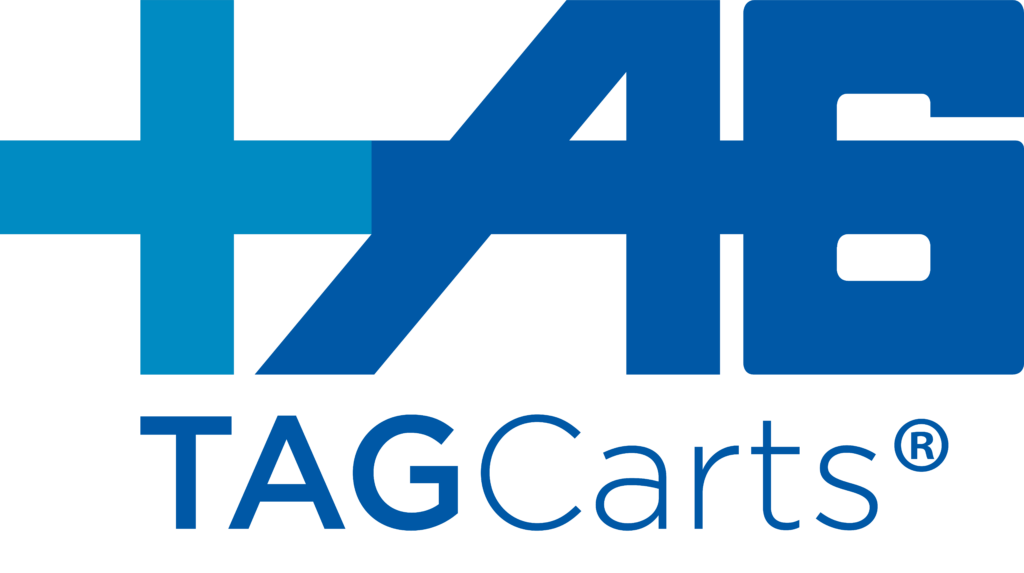CODE-X™
Our Work
In-hospital cardiac arrests (ICHA’s) occurs approximately 292,000 times annually in the United States, with each minute of delay in resuscitation reducing the likelihood of successful outcomes by 7-10%. This significant decline underscores the importance of rapid response systems and effective clinical protocols to minimize time to intervention. However, current code blue crash carts, essential for emergency response, introduce critical delays due to their need for wall outlet tethering. This tethering leads to an average 15-second delay in mobilization, crating a significant impact on patient survival rates. Therefore, it is critical to redesign these carts’ tethered powered systems to eliminate such delays and enhance rapid response capabilities. TAGCarts work is proposing an innovative solution to address this critical issue with a move powering system designed for rapid deployment while maintaining equipment readiness.
Our work is dedicated to the nursing leadership of Anita Dorr, RN, and all nurses rapidly responding to the life saving efforts of patients everywhere. While the patent was awarded to Dr Nobel, Nurse Dorr is credited with the invention of the first Code Cart / Code Blue Crash Cart (CBCC), then called the “Crisis Cart” in the 1960’s.
CODE-X is our novel and innovative code cart rapid release power system.
If you and your hospital would like to know more or collaborate on this work, please contact us here (contact page link)
Please review or download the directional data below and connect with us to learn more.
Summary Report: Nursing Perspectives on Code Cart Operation
By: PaceSetter & Associates
Prepared for: TAGCarts, Inc.
Prepared by:
Jeanine W.C. Blake, MS, BSN, RN
Karen K. Giuliano, PhD RN, MBA, FAAN
Summary Report: Nursing Perspectives on Code Cart Operation
Study Purpose
Describe code cart mobility and safety from the perspective of experienced acute care nurses.
Background/Significance
- Each minute delay in resuscitation during cardiac arrest leads to a 7-10% decrease in success.
- Code carts need to be equipped and organized in a way that affords easy and quick access for care providers
- Code carts should be designed with human factors in mind so that healthcare workers are supported during critical patient care scenarios
Code Cart History
- First code cart, then called “crisis cart” was developed by Anita Dorr, RN in the 1960s3 but she did not receive a patent
- Dr. Nobel invented a similar concept around the same time, received a patent, and is often credited as the inventor of the crash cart
- Since then, the code cart has become invaluable to emergency care
- While incremental improvements in the code cart have been made over time, the fundamental design and usability have remained largely unchanged
Relevance to Nursing
- Code carts should be designed with end user nurse engagement and human factors design
- This is an opportunity for nurse led innovation to improve a piece of equipment vital to patient care and most intimately understood by nurses
- Improvements come with significant safety implications for both patients and clinicians
Methods & Results
- Social media and direct recruitment
- Data was collected using an anonymous 25-item online survey
- Acute care nurses (N=41)
- Descriptive data analysis
| Variables (Frequency), Primary Shift | N | % |
|---|---|---|
| Days | 30 | 73.2% |
| Nights | 4 | 9.8% |
| Evenings | 1 | 2.4% |
| Variable | 6 | 14.6% |
| Variables (Frequency), Travel Nurse | N | % |
|---|---|---|
| Yes | 3 | 7.3% |
| No | 41 | 92.7% |
| Variables (Frequency), Patient Population | N | % |
|---|---|---|
| Adult | 40 | 97.6% |
| Pediatric | 1 | 2.4% |
| Variables (Frequency), Clinical Area | N | % |
|---|---|---|
| Med-surg | 4 | 9.8% |
| Critical Care | 17 | 41.5% |
| Step-down/PCU | 8 | 19.5% |
| Operating Room | 3 | 7.3% |
| Emergency Department | 3 | 7.3% |
| Other | 6 | 14.6% |
| Nurse | Mean (SD) | Range |
|---|---|---|
| Age (Years) | 33.7 (9.4) | 23- 66 |
| Nursing Experience (Years) | 8.5 (7.6) | 2.5 - 35 |
| Number of codes in past 12 months | 15.9 (23) | 1 - 100 |
Survey Results
Which of the following items must be unplugged from the wall outlet before mobilizing the art to the code? (please check all that apply)
| Variables (Frequency) | N | % |
|---|---|---|
| Defibrillator | 40 | 97.6% |
| Suction | 9 | 22.0% |
| Other | 2 | 4.9% |
The code carts I am familiar with require the following prior to mobilization.
| Variables (Frequency) | N | % |
|---|---|---|
| Unplug 3+ cords from the wall outlet | 1 | 2.4% |
| Unplug 1 equipment cort or master cord from wall outlet | 24 | 58.5% |
| Unplug 2 cords from the wall outlet | 15 | 36.6% |
| No unplugging of cord is required | 1 | 2.4% |
Have you ever forgotten to unplug the code cart power cord(s) when responding to a code?
| Variables (Frequency) | N | % |
|---|---|---|
| Yes | 12 | 29.3% |
| No | 29 | 70.7% |
I have personally witnessed equipment falling onto the floor during emergency response to cardiac arrest because it was not unplugged before mobilization.
| Variables (Frequency) | N | % |
|---|---|---|
| Yes | 6 | 14.6% |
| No | 35 | 85.4 |
Conclusion
- An experienced group of nurses participated in this survey, the majority of whom cared for adult populations and experienced an average of 15 codes per year
- Respondents felt safety would be improved by improving cart mobility and quick-release power disconnect
